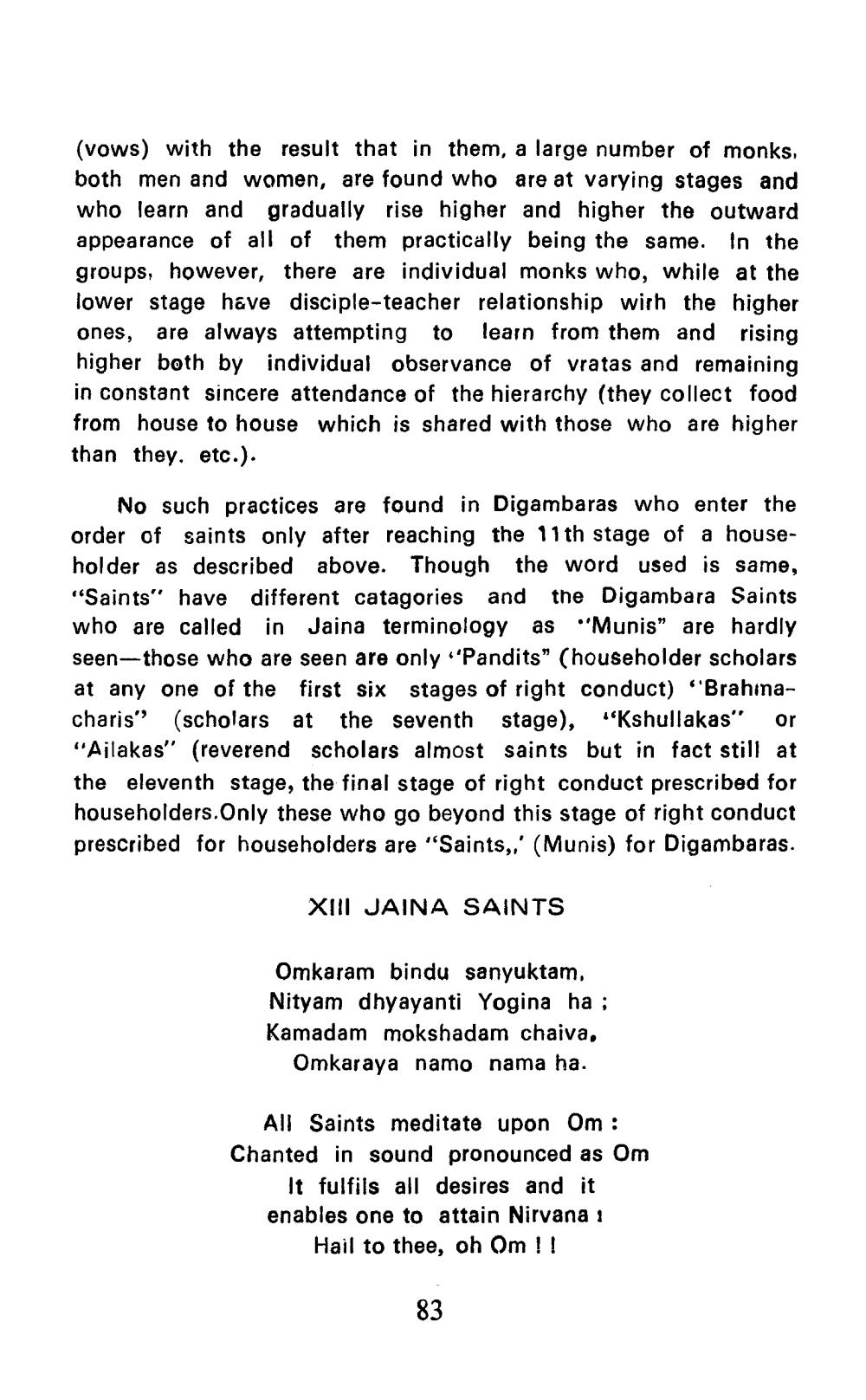________________
(vows) with the result that in them, a large number of monks, both men and women, are found who are at varying stages and who learn and gradually rise higher and higher the outward appearance of all of them practically being the same. In the groups, however, there are individual monks who, while at the lower stage have disciple-teacher relationship with the higher ones, are always attempting to learn from them and rising higher both by individual observance of vratas and remaining in constant sincere attendance of the hierarchy (they collect food from house to house which is shared with those who are higher than they, etc.).
No such practices are found in Digambaras who enter the order of saints only after reaching the 11th stage of a householder as described above. Though the word used is same, "Saints" have different catagories and the Digambara Saints who are called in Jaina terminology as "Munis” are hardly seen-those who are seen are only "'Pandits" (householder scholars at any one of the first six stages of right conduct) "Brahinacharis" (scholars at the seventh stage), "Kshullakas" or "Ajlakas" (reverend scholars almost saints but in fact still at the eleventh stage, the final stage of right conduct prescribed for householders. Only these who go beyond this stage of right conduct prescribed for householders are "Saints,i' (Munis) for Digambaras.
XIII JAINA SAINTS
Omkaram bindu sanyuktam, Nityam dhyayanti Yogina ha ; Kamadam mokshadam chaiva,
Omkaraya namo nama ha.
All Saints meditate upon Om : Chanted in sound pronounced as Om
It fulfils all desires and it enables one to attain Nirvana i
Hail to thee, oh Om !!
83




